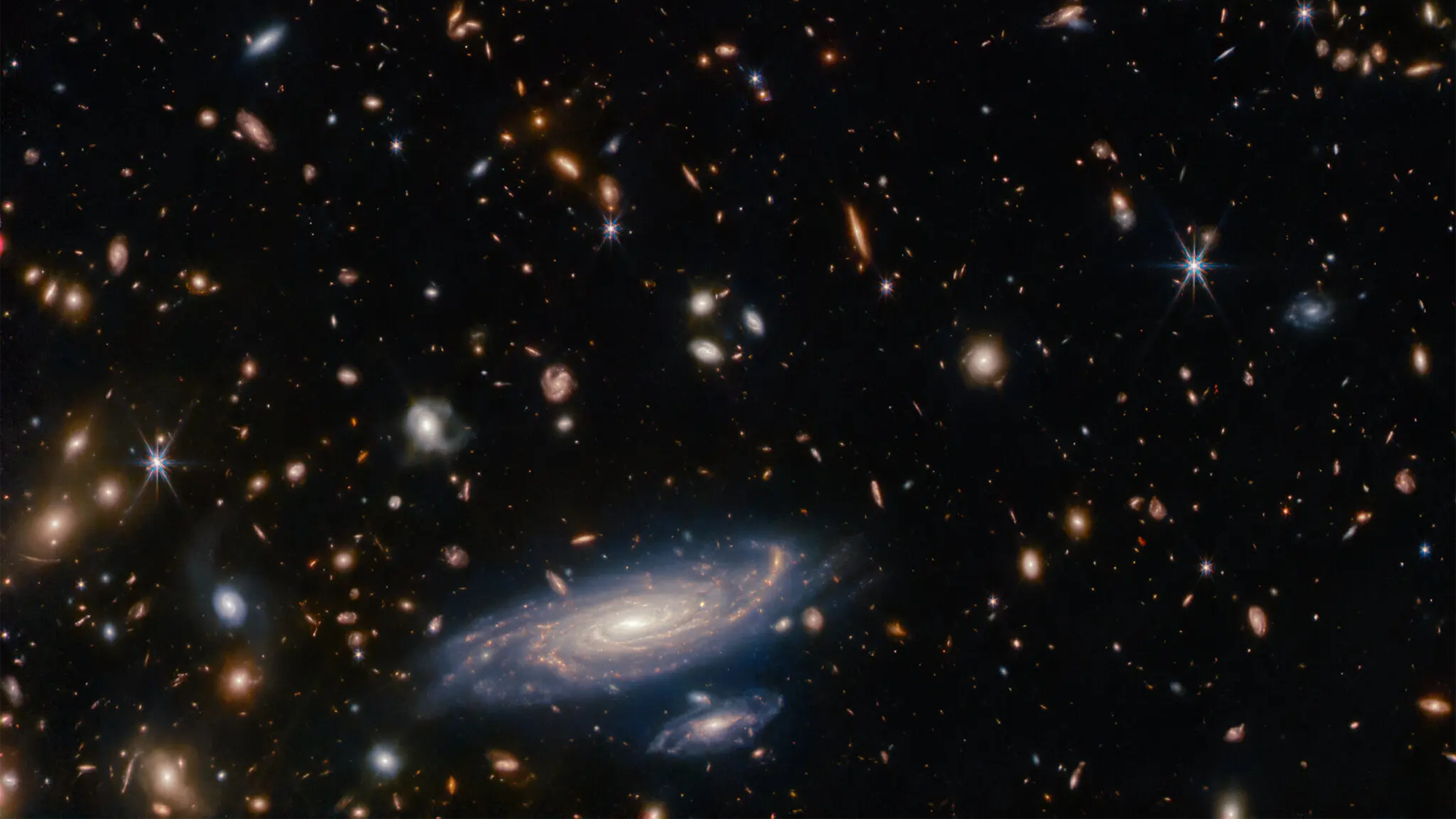

Breathtaking visuals of the swirling arms of spiral galaxies are some of the awe-inspiring images our galaxy and others have to offer.
In only its first Earth-year in space, the James Webb Space Telescope (JWST), has already captured some stunning images of these spinning wonders.
[Related: Our universe mastered the art of making galaxies while it was still young.]
In the constellation Hercules–named for the Roman spelling of the Greek demigod Heracles known for his strength–are trillions of stars that stretch back about 13 billion light-years. In the lower center of the constellation is a spiral galaxy known as LEDA 2046648. It’s a billion light-years away, but one of its defining characteristics is that it looks like our very own Milky Way galaxy.
A new image from JWST is so clear that the spiral arms of the galaxy are visible—impressive for a sight so far away. It shows multiple galaxies and stars in six-pointed diffraction spikes that have become one of JWST’s signature observations.

The image was taken with JWST’s Near-InfraRed Camera (NIRCam) which can detect infrared rays and see light on the infrared spectrum. This is an important part of one of Webb’s main missions of exploring the age of when stars and galaxies first began to light up the universe.
JWST also discovered a cannibal galaxy named “Sparkler,” for the dwarf galaxies and 12 globular clusters shining around it. In the results published towards the end of last year in the journal Monthly Notices of the Royal Astronomical Society, it appears to be a “very early” mirror image of the Milky Way. Studying Sparkler could help astronomers understand how our home galaxy took shape.
[Related: The James Webb Space Telescope just identified its first exoplanet.]
According to the study team, the galaxy is a cannibal because it is gobbling up nearby celestial objects to grow ever larger. It’s believed that the Milky Way galaxy also grew this way. Astronomers spotted the star in JWST’s First Deep Field released in July 2022. This image is the deepest and most detailed view of the universe ever captured and was Webb’s first full-color picture.

The Sparkler galaxy is shown as a warped orange line surrounded by spots of light.
“We appear to be witnessing, first hand, the assembly of this galaxy as it builds up its mass—in the form of a dwarf galaxy and several globular clusters,” said co-author Duncan Forbes, an astrophysicist at Swinburne University of Technology in Australia, in a statement. “We are excited by this unique opportunity to study both the formation of globular clusters, and an infant Milky Way, at a time when the universe was only one-third of its present age.”
